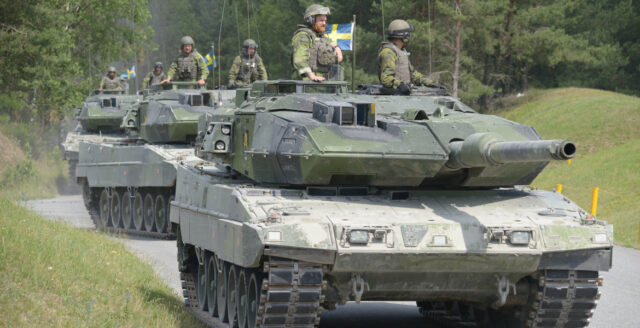Sweden has an extensive defense industry with production of fighter aircraft, submarines and combat vehicles. Despite this, the industry is heavily dependent on US components and technology.
According to Robert Limmergård, Secretary General of the Swedish Association of Security and Defense Companies (SOFF), most Swedish defense products contain some kind of American component.
– There are very few products that do not have some type of component, software, electronics or the like that is American, Limmergård told Swedish state broadcaster SVT.
In practice, this dependence means that Sweden’s defense industry is sensitive to changes in political relations with the United States. Security policy determines which countries can buy and sell defense equipment, which in turn affects the industry’s trade opportunities.
Robert Limmergård explains that the industry operates in a politically driven market where politics not only sets the rules, but also determines the playing field.
Mutual dependency
Despite this, Swedish defense companies do not express major concerns, given that they see dependence between Sweden and the United States as mutual. American defense companies are in turn dependent on certain Swedish products, creating a common interest in maintaining stable trade relations.
However, it is important to note that this dependency could have consequences if political relations between the countries change. If the United States were to decide to restrict exports of certain components or technology, it could affect Sweden’s ability to produce and maintain its defense equipment.

In other words, Sweden’s defense industry is highly integrated with that of the United States, which consequently creates both opportunities and problems. While this interdependence may contribute to a degree of stability in trade relations, the political landscape can change rapidly, as the recent US presidential election has clearly shown.
Membership of the US-led NATO military pact is seen as potentially strengthening ties with the US military industry and arms lobby, potentially increasing access to advanced US defense technology. On the other hand, it could also increase pressure on Sweden to adapt its defense industry to NATO standards and preferences, which could conceivably further strengthen dependence on American systems.
Examples of Swedish defense products that may contain US components
- Saab 39 Gripen: The Swedish Gripen fighter aircraft uses US computer components and software in its advanced fly-by-wire system. The system includes the MIL-STD-1553B fieldbus, which is a US standard for military communications between different systems in the aircraft.
- Gotland-class submarines: Sweden's submarines, such as HMS Halland, have undergone modernization using US technologies. Although the submarines are essentially Swedish-made, they may contain US components in command and control systems.
- Combat vehicles: Many combat vehicles, such as the Stridsfordon 90, may contain American components in the form of electronics and communication systems.
- Air defense systems: Sweden's air defense, including the Patriot system, relies heavily on U.S. components and technology.








